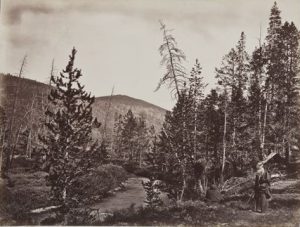
![]() In 1839, the invention of photo very different photographic processes was announced to the world. The daguerreotype, invented by Louis Jacques Mandé Daguerre, was a unique image on a metal plate coated with mirrored silver. Although the process was capable of rendering precise detail, the metal surface and lack of negative to make prints limited it as a practical photographic process. The calotype, perfected by William Henry Fox Talbot, was a negative/positive process that produced multiple prints on paper, but the paper negatives used resulted in fuzzy prints lacking fine detail.
In 1839, the invention of photo very different photographic processes was announced to the world. The daguerreotype, invented by Louis Jacques Mandé Daguerre, was a unique image on a metal plate coated with mirrored silver. Although the process was capable of rendering precise detail, the metal surface and lack of negative to make prints limited it as a practical photographic process. The calotype, perfected by William Henry Fox Talbot, was a negative/positive process that produced multiple prints on paper, but the paper negatives used resulted in fuzzy prints lacking fine detail.
In 1851, the wet-plate collodion process was developed. It combined aspects of both the daguerreotype and the calotype. Light sensitive chemicals suspended in sticky collodion could be poured on metal plates to produce single tintypes, or on glass to produce negatives from which prints could be made. The collodion was only light sensitive while wet, which required the exposing and developing to happen within about a ten-minute period. Prints made from glass negatives had the fine detail of a daguerreotype, as well as the calotype’s potential for multiple prints. During the second half of the nineteenth century, photographic paper was coated with egg whites to bind photographic chemicals to the paper. Durable prints could be made in large numbers, although the thin paper’s tendency to curl required prints to be mounted to a cardboard backing. Because the chemicals used in making wet-plate collodion negatives were sensitive only to blue light, a sky with clouds was almost impossible to photograph. Landscape photographers often worked around this limitation by using multiple negatives to make a single print – one exposed for the land and another for the sky.